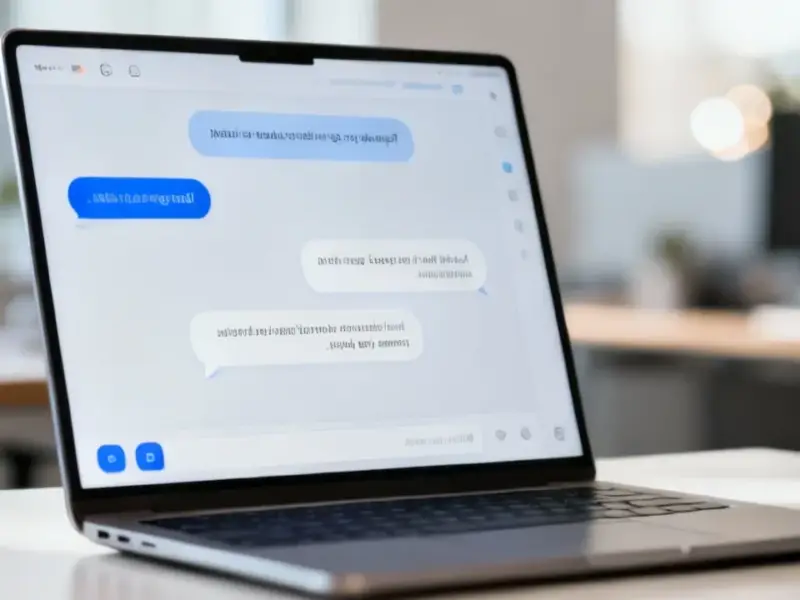According to ExtremeTech, a comprehensive review published in the journal Nature reveals that neuromorphic architecture represents the most promising path toward creating functional electronic noses that can match or exceed human olfactory capabilities. The research highlights that humans can intuitively identify approximately one trillion different smells at incredibly low concentrations while consuming minimal energy compared to current scientific sensing equipment. Unlike visual sensors that already surpass human capabilities, generalized chemical sensors have lagged significantly behind biological noses in versatility and performance. The review specifically cites recent Korean research demonstrating working olfactory neuron models and emphasizes that future breakthroughs will depend on biohybrid materials and brain-inspired computing architectures. This convergence of technologies suggests we’re approaching a tipping point for practical smell-sensing applications.
The Coming Industry Shakeup
The implications for multiple industries are staggering. Food safety represents an immediate $200 billion market opportunity where current spoilage detection methods remain primitive and labor-intensive. An effective e-nose could continuously monitor perishable goods throughout the supply chain, potentially reducing the estimated 1.3 billion tons of food wasted annually. The Nature review correctly identifies this application, but underestimates the regulatory hurdles and implementation timelines. Food producers will face significant capital expenditure decisions as this technology matures, creating winners and losers based on early adoption strategies.
Medical Diagnostics Transformation
Healthcare stands to undergo its most significant diagnostic revolution since the advent of blood testing. The ability to detect metabolic disorders, infections, and even certain cancers through breath analysis could decentralize medical diagnostics. Research into combining human olfactory receptors with artificial intelligence suggests we’re closer than many realize to non-invasive screening tools. However, the regulatory pathway for medical-grade smell sensors will be complex, requiring extensive clinical validation. Early movers in this space will need deep pockets and patience, but the payoff could redefine preventive medicine.
Industrial Safety and Environmental Monitoring
Current gas detection systems represent a $5 billion global market that’s ripe for disruption. Most existing sensors are specialized for specific gases and lack the versatility of biological systems. The breakthrough described in recent sensor research points toward multi-gas detection capabilities that could replace entire arrays of single-purpose sensors. This has profound implications for industrial safety, environmental monitoring, and even military applications. Companies like Honeywell and MSA that dominate the safety equipment market face both threat and opportunity—they must either lead this transition or risk being displaced by nimble startups.
The Smartphone Integration Challenge
The vision of smell-enabled smartphones faces more practical hurdles than technical ones. While the Korean research correctly identifies “increasing demand for gas sensors on mobile devices,” the path to consumer adoption involves complex considerations around accuracy, calibration, and privacy. False positives in breath analysis could create liability issues, while the potential for environmental monitoring raises surveillance concerns. The earlier foundational research in this field didn’t anticipate these societal implications. Consumer acceptance will depend on transparent data handling and clear value propositions beyond novelty applications.
Investment and Commercialization Timeline
We’re likely 3-5 years from commercially viable e-nose systems in specialized applications and 5-7 years from consumer integration. The neuromorphic approach shows promise, but manufacturing scalability remains unproven. Venture capital has been cautious in this space, with most funding going to academic research rather than commercial development. As prototypes demonstrate reliable performance, we expect a funding surge similar to what we saw with early machine learning startups. The companies that solve the calibration and durability challenges first will capture disproportionate market share across multiple verticals.
Established Players at Risk
Traditional sensor manufacturers face existential threats if they don’t adapt quickly. Companies that have built businesses around single-gas detectors or limited-spectrum chemical sensors may find their products obsolete almost overnight. Meanwhile, semiconductor companies with neuromorphic expertise—like Intel with its Loihi chips or IBM with TrueNorth—are well-positioned to capitalize on this transition. The biggest winners may be companies that can integrate smell sensing with existing AI platforms, creating systems that don’t just detect odors but understand their context and implications.



